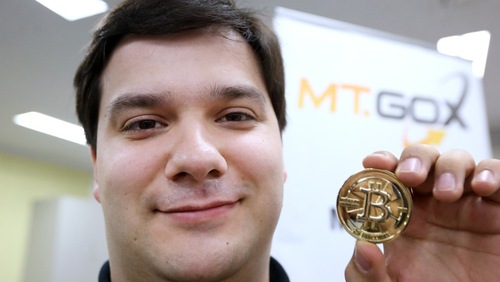The Great Gox Heist

Now that Mark Karples has resigned from the board of the Bitcoin Foundation, let’s address the elephant in the room: insider trading.
The theory is that Mt. Gox has used the withdrawl corral to execute massive naked-short sales (if you’re going to naked short, it must be massive), selling while their local price was at a premium and covering while it is at a steep discount, in order to reduce their short Bitcoin exposure and balance the books, and probably also profit.
Let’s consider the math of Mt. Gox’s situation:
1) In mid-2013 they lost around $5 million USD to the US authorities, temporarily halting fiat currency deposits, and then allowing them in an unreliable queue.
2) As people bought Bitcoin on their exchange using those USD deposits, in the range of $80-180 USD, Mt. Gox would have accumulated a short position in BTC. We’re talking about a short-fall of between 40 and 50 thousand BTC.
3) Let’s assume that Mt. Gox foresaw this problem and tried to limit their short Bitcoin exposure by buying BTC with proprietary funds, they did about 3 million BTC in volume earning about .15% on the fiat side and .15% on the crypto side, so assuming they used the fiat for operating expenses and the crypto to accumulate a position, they might have accumulated between 4 and 5 thousand BTC. Selectively servicing withdrawals could have reduced their short exposure to around 20k BTC.
4) While the Mt. Gox premium increased the cost basis (measured in eventual USD withdrawal demands) of their short position, the more it rose the more volumes drove the price higher, meaning they still suffered a convex loss such that they had to eventually stop giving USD to arbitragers who were basically donating their Bitcoin to the corral. By the time price peaked at ~$1242, the hole in their balance sheet could have grown to between 25 and 50 million dollars.
5) Fast forward to January, low volume, price still sky high, secret indictments coming down on you, what’s the end-game? You do what every central banker or mobster does: you bust the joint out, you light a match.
6) Once you cut off your BTC depositor base off from the Blockchain, you have swapped them the actual BTC reserves you retain for “Goxcoin”, and then proceed to sell those reserves to your customer base at a premium to the other exchanges. As the price continues to fall and they announce more nonsense bad news, the depositor base, now mostly long Bitcoin, panics and dumps, precipitating a brutal crash to a steep discount from other exchanges. Meanwhile, you are sitting on the USD deposits of your customers, now no longer a liability, but rather, an asset, and begin buying Bitcoin at under $300, $200, even under $100. No more short Bitcoin position! Your customers losses become your re-balancing.
7) Announce that you have solved the technical problem, but, now you require verification before you allow even BTC withdrawals. so you have more time before the mass exodus begins, more fees, and a window where you can tumble your ill-gotten Bitcoins, send them to proxy accounts for sale on other exchanges, and so on. Optional but a possible explanation for the weird pricing differentials between Huobi, Bitfinex, BTC-e and Bitstamp.
The good news is, this would mean Gox is solvent! Everyone is going to get their principal back! Hope it wasn’t too diminished, such as perhaps by 90%, during all this subterfuge. If it is true, we should a return to business-as-usual for the burgeoning cryptocurrency ecosystem, the mass exodus of Gox funds so their volume evaporates, and probably a civil suit if not criminal indictment of Gox management, not just for the Silk Road connection, which is probably their current secret indictment, but for insider trading and depositor fraud.
Welcome to the jungle.
Of course, it doesn’t need to be this way, and we don’t need soft code (legal regulations) trying to clean it up. We can do multisig exchanges where this is no trust component involved in giving custody of our funds to anyone else. 2014 is the year to make the jump.